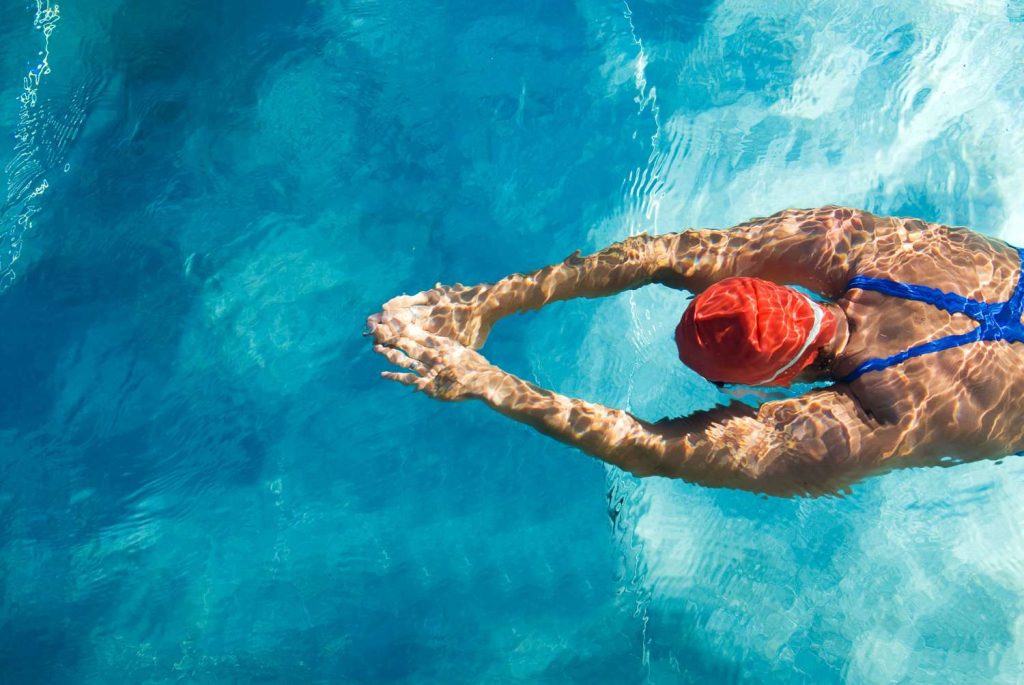The Best Swimming Techniques for Speed and Efficiency

Swimming is not only an excellent form of cardiovascular exercise but also a highly competitive sport. For swimmers looking to enhance their speed and efficiency in the water, mastering the right techniques is crucial. In this article, we will explore the best swimming techniques to help you glide through the water with greater speed and efficiency.
Freestyle Stroke
1. Streamline Position
Achieving a proper streamline position is fundamental for minimizing resistance and maximizing speed. When pushing off the wall or diving in, ensure your body is in a straight line with your arms extended above your head, hands together, and biceps close to your ears. This position reduces drag and allows you to glide smoothly through the water.
2. Efficient Breathing
Efficient breathing is essential for maintaining a consistent rhythm and reducing drag. Practice bilateral breathing, which means breathing on both sides, to keep your stroke balanced. Inhale quickly and exhale continuously while your face is in the water. This technique helps maintain a steady oxygen supply and minimizes disruptions in your stroke.
3. High Elbow Catch
A high elbow catch ensures you are pulling the maximum amount of water with each stroke. As your hand enters the water, keep your elbow high and your fingertips pointing downward. This position engages your larger back muscles, providing more power and propulsion.
4. Kicking Technique
An effective kick contributes significantly to your overall speed. Keep your legs close together and kick from the hips with pointed toes. A steady, flutter kick helps maintain your body position and provides continuous propulsion.
Backstroke
Straight Arm Recovery
In backstroke, the arm recovery should be straight and relaxed. As your hand exits the water, keep your arm straight and rotate your shoulder to minimize resistance. This technique reduces drag and allows for a smoother, more efficient stroke.
Body Rotation
A proper body rotation is crucial for an efficient backstroke. Rotate your shoulders and hips together, ensuring your body stays aligned. This rotation helps engage your core muscles and enhances your overall propulsion.

Consistent Kick
Like in freestyle, a consistent kick is vital for maintaining speed in backstroke. Keep your legs close together and kick from the hips with a steady, flutter kick. Avoid bending your knees too much, as this can create drag and slow you down.
Breaststroke
Powerful Pull
The breaststroke pull should be powerful and efficient. As your hands come together in front of your chest, press outward and sweep your arms back in a circular motion. This technique generates significant propulsion and helps you move through the water more efficiently.
Timing and Glide
Timing is crucial in breaststroke. After completing the pull and kick, glide for a moment to take advantage of the momentum. This glide phase reduces resistance and allows you to maintain speed with minimal effort.
Efficient Kick
The breaststroke kick, or frog kick, should be performed with precision. Bring your heels toward your buttocks, then whip your legs outward and together in a circular motion. Ensure your feet are pointed outward during the kick to maximize propulsion.
Butterfly Stroke
Dolphin Kick
The butterfly stroke relies heavily on a strong dolphin kick. Keep your legs together and kick from the hips with a fluid, undulating motion. The power generated from the dolphin kick helps propel your body forward and maintain speed.
Arm Recovery
The arm recovery in butterfly should be smooth and controlled. As your hands exit the water, keep your elbows slightly bent and bring your arms over the water in a circular motion. This technique reduces resistance and allows for a more efficient stroke.
Breathing Technique
Breathing in butterfly can be challenging, but an efficient technique is essential for maintaining rhythm. Lift your head forward and take a quick breath as your arms complete the pull phase. Exhale continuously while your face is in the water to ensure a steady oxygen supply.
General Tips for Speed and Efficiency
Proper Hydration and Nutrition
Maintaining proper hydration and nutrition is crucial for peak performance. Stay hydrated before, during, and after your swim sessions. Consume a balanced diet rich in proteins, carbohydrates, and healthy fats to fuel your body and enhance recovery.
Strength and Conditioning
Incorporate strength and conditioning exercises into your training routine. Focus on building core strength, as a strong core enhances stability and efficiency in the water. Exercises like planks, squats, and pull-ups can improve your overall swimming performance.
Consistent Practice
Consistency is key to improving your swimming techniques. Practice regularly and incorporate drills that target specific aspects of your stroke. Work with a coach to receive personalized feedback and make adjustments to your technique.
Mental Focus
Swimming is as much a mental sport as it is a physical one. Develop mental focus and visualization techniques to stay motivated and improve your performance. Set specific goals for each practice session and track your progress over time.
By mastering these swimming techniques and incorporating them into your training routine, you can enhance your speed and efficiency in the water. Whether you’re a competitive swimmer or simply looking to improve your fitness, these tips will help you achieve your goals and enjoy the many benefits of swimming.

